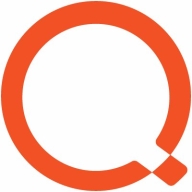

Find out in this report how the two Backup and Recovery solutions compare in terms of features, pricing, service and support, easy of deployment, and ROI.


Quest QoreStor is commonly used for deduplication, compression, backup, and restore, integrated with NetVault for robust data redundancy and cloud storage replication.
Quest QoreStor optimizes data management with its sophisticated deduplication and compression capabilities, allowing companies to efficiently handle data redundancy. By integrating seamlessly with platforms like NetVault, Veeam, and resellers utilizing SPHiNX and BackBox, Quest QoreStor serves as both local and offsite repositories. This solution manages replication between production and corporate locations, strengthening recovery and improving backup operations. QoreStor's software-based nature ensures flexibility and easy integration, although improvements in replication and installation are sought by users.
What Are Key Features of Quest QoreStor?In sectors such as finance, healthcare, and technology, Quest QoreStor aids in maintaining vital data management with its robust features, enhancing data recovery strategies. Its use with secondary backup targets and replication capabilities supports a wide range of industry requirements. However, challenges such as initial setup complexity and system interface improvements are areas for growth, particularly in expanding capacities and addressing specific cybersecurity concerns like ransomware protection on Linux.
Teradata is a scalable data analytics platform designed to meet enterprise demands for large-scale data management and processing, focusing on performance, scalability, and security for complex query executions.
As a leading data warehousing solution, Teradata integrates advanced analytics enabling organizations to derive insights from massive datasets. It supports high-volume data workloads with its architecture optimized for analytical queries. Users benefit from its robust scalability, allowing seamless expansion as data grows. Teradata's SQL engine is compatible with a wide range of data types, ensuring flexibility in data analysis. With advanced security measures, it protects sensitive data across various environments, providing peace of mind to users handling critical information.
What are the most important features of Teradata?Teradata is widely used in industries like finance, telecommunications, and healthcare, where data-driven decisions are critical. Companies leverage its robust analytics capabilities to enhance customer experiences, streamline operations, and ensure compliance with regulatory requirements. In these sectors, quick access to data insights can significantly impact competitive advantage.
We monitor all Backup and Recovery reviews to prevent fraudulent reviews and keep review quality high. We do not post reviews by company employees or direct competitors. We validate each review for authenticity via cross-reference with LinkedIn, and personal follow-up with the reviewer when necessary.